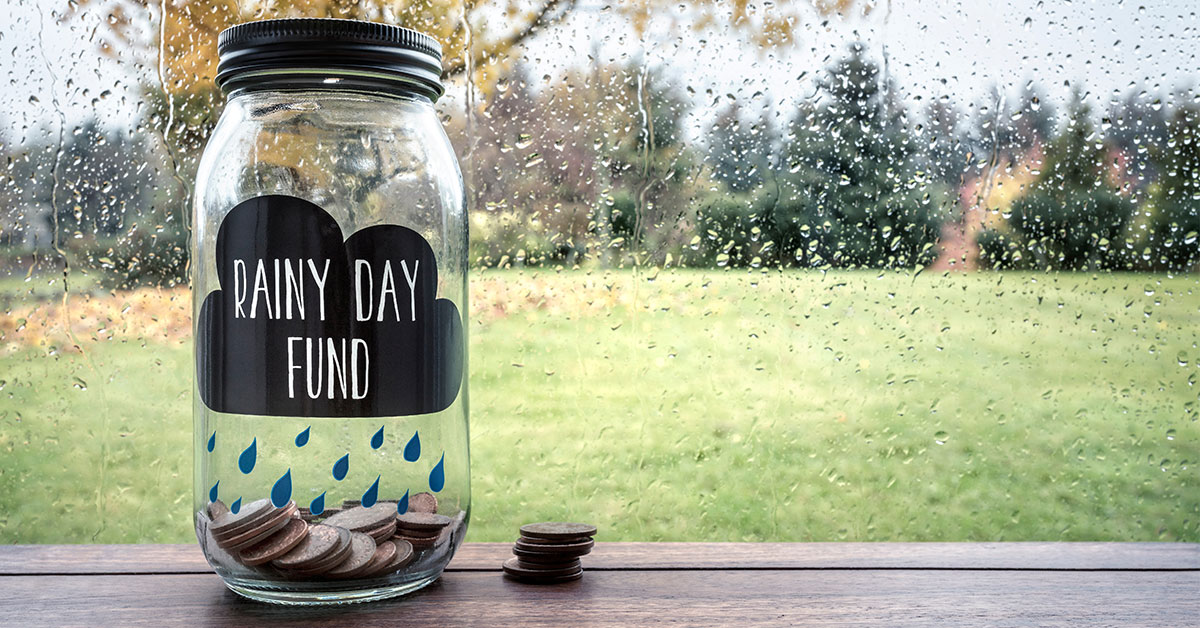
Easy Ways to Save Money for an Emergency Fund
Saving money for a rainy-day fund can seem like an impossibility if you have bills to pay and other financial responsibilities. But having an emergency fund that's ready when you need it can make all the difference during times of financial uncertainty. An emergency savings fund gives you peace of mind, knowing that if something unexpected happens—like a car repair or sudden medical expense—you have a cushion to help with whatever life throws at you. Even if your bank account is far from being full, there are still easy ways to save money and build up an emergency fund without feeling stretched financially. In this blog post, we cover some simple strategies so you can create financial security no matter what curveballs may come your way.
9 Easy Tips to Get Started
1. Determine how much you need to save
When it comes to setting up an emergency fund, the first step is determining how much you need to save. This number is going to be different for everyone, but a good starting point is to aim for a baseline of $500 and go up from there. Set a timeline for yourself and break down your saving into small, manageable goals so you can track your progress. Evaluate your income and expenses and find an amount you can realistically put aside each month until you’ve reached at least one month’s worth of living expenses. Remember that any amount you save will help, so don’t overwhelm yourself by aiming for an unattainable number.
Don’t forget to check in regularly to reassess your plan and make any necessary adjustments—this will help ensure that you stay on track towards achieving your financial goals.
2. Decide where to store your emergency fund
Next, you need to decide where to put your emergency fund (such as a high-yield savings account, money market account, or traditional savings account), and you should keep it in a separate account from your everyday checking account. Keeping these accounts separate is a great way to avoid temptation. When it's out of sight and out of mind, you won't be as likely to dip into your emergency fund unnecessarily. Additionally, withdrawal limits on savings accounts can help curb impulse spending and make sure that the money is only being used when absolutely necessary.
It is also recommended to keep your emergency fund separate from other savings funds/accounts you have. Separate savings accounts will discourage you from dipping into your emergency fund for other savings goals and will help you see your progress towards each separate goal more clearly.
3. Set up a budget
Setting up a budget is another important step in saving for an emergency fund. First, take the time to determine where your money comes from, so you can understand where it's going. It’s important to know your net income (aka the money that actually hits your accounts) so you know how much you have to spend and save to begin with. This means logging and sorting through your spending habits both small and large, such as eating out and buying coffee. Additionally, figure out regular bills and their due dates. This will help you create an effective working budget that fits all your income sources and expenses.
To make sure your budget works for you, find a tool that works best—whether it be through saving receipts, using an app, keeping an Excel sheet, or even writing down expenses in a journal. Most importantly, remember to stick to your budget and set realistic goals for yourself. Following these steps will make your budget planning as painless as possible.
4. Automate your savings
Automating your savings is a great way to ensure that you stay on track towards building your emergency fund. Consider setting up a direct deposit from your paycheck into a separate savings account, or an automatic transfer from your checking account into your savings account on the days you get paid. This way, you’re making progress on your emergency fund without even thinking about it.
It's important to choose a day of the month that works for you and determine a reasonable amount to transfer each time; once set up, you can always adjust as needed. Automating your savings will help you reach your financial goals with little effort on your part!
5. Cut back on unnecessary expenses
Reducing your spending is a great way to save for an emergency fund. However, just like your savings goals, deeming what areas you can reduce your spending in will look different from person to person. Start by evaluating your spending habits and finding areas where you could pull back without feeling deprived. This may be eating at home more often, cancelling any subscriptions you’re no longer using, or finding some items you want/need secondhand. Saving doesn’t mean cutting out all the enjoyable things in your life; it’s about finding ways to save smarter by making small changes that can add up quickly and help you reach your financial goals faster.
6. Make extra money by picking up some freelance work or taking on a part-time job
While taking on extra work can seem daunting, multiple income streams will help you reach your emergency fund goals faster. Consider marketing your skills and advertising on job boards like Upwork or Fiverr—this will help you find freelance work that fits your schedule and expertise.
You can also look for remote part-time jobs, as these are becoming increasingly common in the digital age. If you’re already employed, think about picking up some extra shifts or overtime at your existing job; this can be a fast way to add more money to your savings account without looking for another job.

7. Put any windfalls towards your emergency fund, such as tax refunds or birthday money
Tax refunds can be one of the larger checks Americans receive all year—setting aside a portion of this money in your emergency fund will help it grow quickly. Additionally, you should consider putting extra money gained from occasions like holidays and birthdays towards your emergency fund. This is especially useful for those with irregular income as it helps build your savings when additional money might not otherwise be available.
A good rule of thumb is to put 70% of your windfalls towards your emergency fund if you haven’t hit your base goal (usually $500-$1000) yet. Doing so will help prevent you from taking on unnecessary debt should something happen. If you’ve already hit said goal, then consider putting 20-30% towards your emergency fund, 50% towards any outstanding debt, and the rest towards yourself. After all, hitting our financial goals and enjoying ourselves don’t have to be mutually exclusive concepts.
8. Use cash instead of credit cards to avoid debt
When it comes to building your emergency fund, using cash instead of credit cards is a great idea. When you use credit cards, it can feel like you aren't spending real money—there’s a disconnect from the joy of making a purchase to the painful feeling of paying off your credit card. Using cash is the best option as you will physically see the money leaving your hands, and debit is the next best since you will see it disappear from your account. As trivial as it seems, having this visual aspect of spending money and seeing it whittle down will make you more mindful of your spending. To build better spending habits in general, try to understand the psychology behind them so that you can better curb bad habits.
If you are adamant about putting everyday purchases on your credit card, then try making a payment for the exact amount you put on your card immediately after. For example, if you spend $75 on gas and put the expense on your card, then make a payment for $75 to the credit card you used as soon as you get home. That way, you’re still earning the credit card rewards points, and the money you used is “spent” from your checking account, so it doesn’t accidentally get spent somewhere else.
Another tip is to try implementing no-spend weeks where you only pay for necessary expenses and bills. This is a relatively easy method to rein in any over-zealous spending while you try to meet your financial benchmarks.
9. Live below your means and put the money you save into your emergency fund
Living below your means doesn't mean you have to live poor or miserly; it simply means not outspending what you earn. Making small lifestyle choices such as packing your own lunch every day, taking public transportation instead of driving, or shopping ahead of time rather than impulsively can lead to small savings that add up over time. This extra money can then be put towards either building your emergency fund or paying down debt more quickly. Not only will this better prepare you financially for unexpected costs and emergencies, but it also gives you peace of mind knowing that you are in control of your financial future.
Why Is It Important to Have an Emergency Fund?
Establishing an emergency fund is essential for financial security and peace of mind. An emergency fund should be used to pay for any unexpected costs or unforeseen expenses that may arise in the future. Having a sizable emergency fund will give you the freedom and flexibility to handle any situations without having to take out loans or use credit cards, which can easily lead to unmanageable debt and financial hardship. Additionally, having an emergency fund can provide a buffer from life’s natural ups and downs that can easily derail your plans if you don’t have the resources to manage them.
Most importantly, an emergency fund can help you protect your loved ones in case of an unexpected change in circumstances. Whether it’s a job loss, medical emergency, or something else, you can rest easy knowing that you’re financially prepared for whatever may come your way.
For more information, take our Building Emergency Savings module to learn more handy ways you can begin saving and funding your emergency fund. And remember, our Community First Credit Union Member Services Representatives are always on hand to answer your questions. Give us a call today at 904.354.8537 to get started on your savings journey.
More Ways to Save & Protect Your Money
- Should You Save or Pay Debt?
- Are Peer to Peer Payment Apps Safe?
- How to Save Money for the Holidays
- Pay Yourself First
- How to Plan for Your Child's College Education









